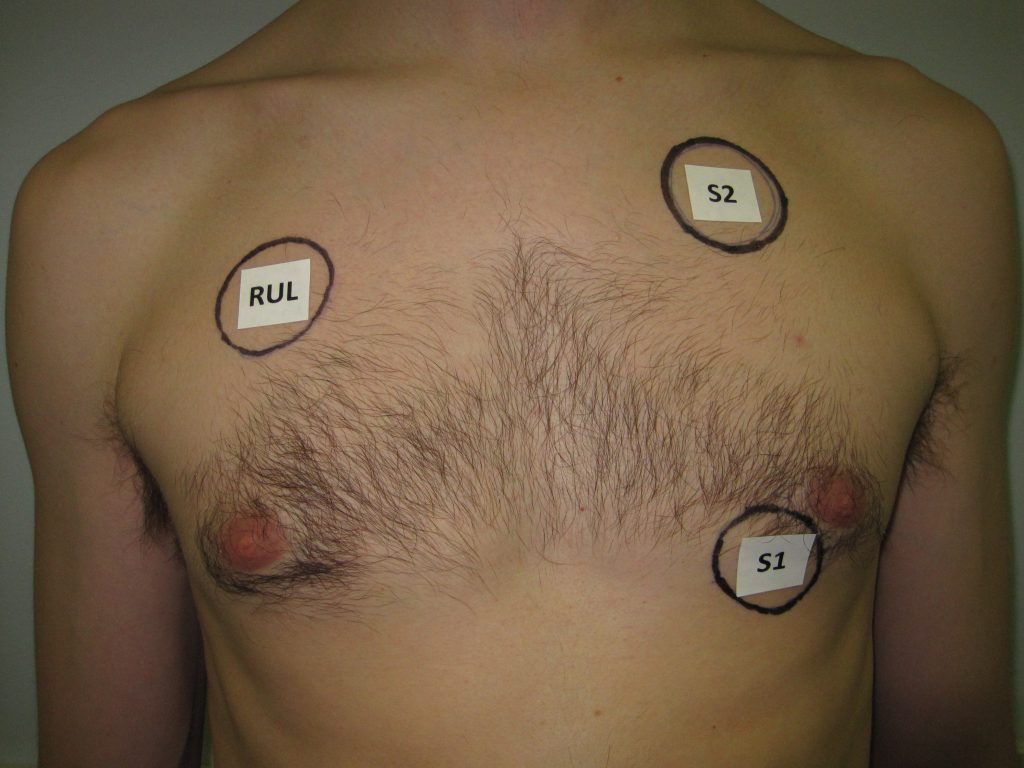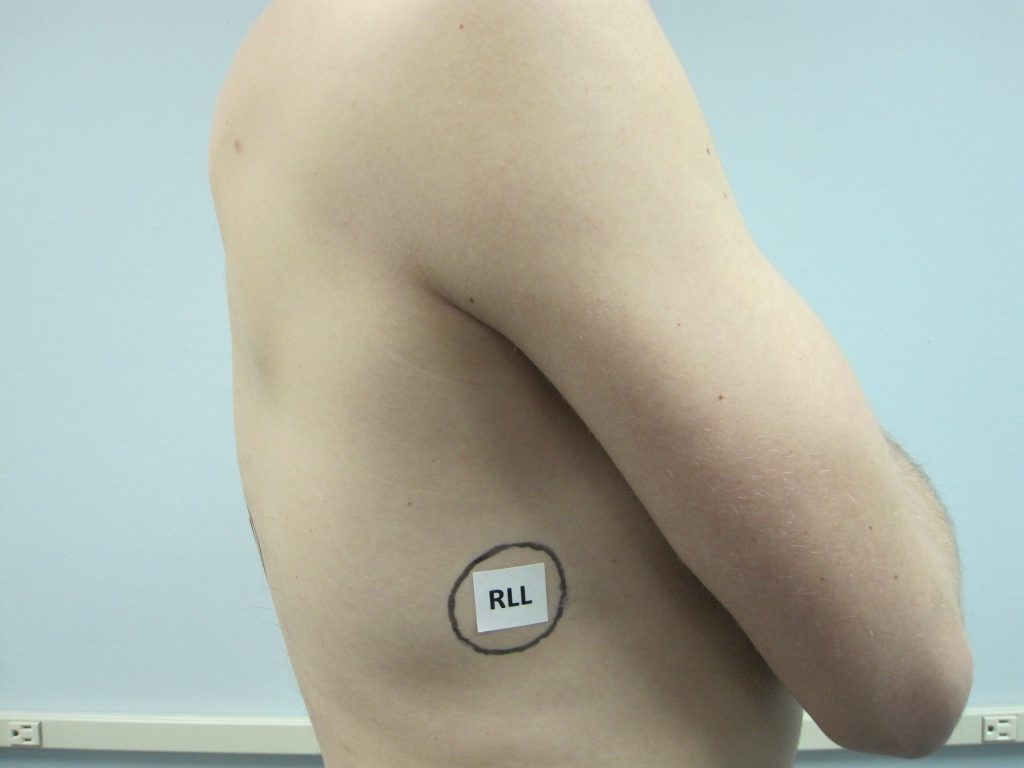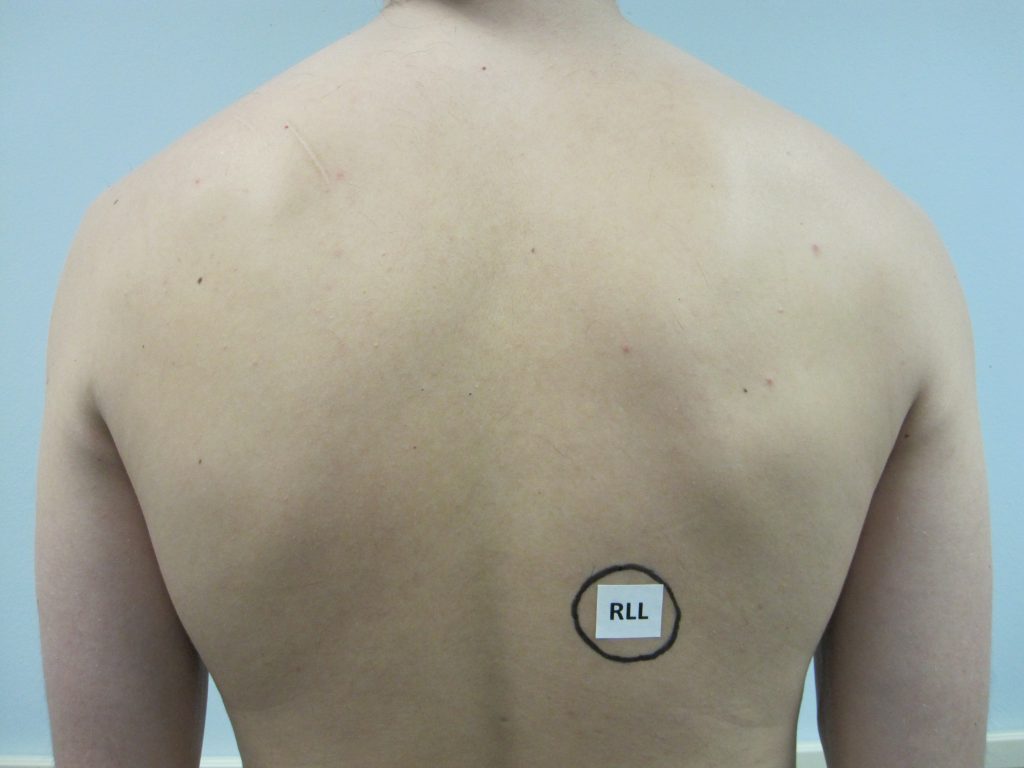- Functional Aspects of Electronic Stethoscope Hardware
- Clinical Evaluation
- Hardware and Software Cut Sheets
When conducting your assessment of the electronic stethoscopes and their accompanying software packages, there are some key functional aspects that should be considered. Theses functional aspects will help you further determine if an electronic stethoscope candidate meets your minimum project requirements. These functional aspects should be part of your hands on subjective testing process and should be evaluated in a systematic fashion in all of the candidates that you have brought in-house for consideration. Determining ratings based on your minimum requirements and then evaluating each piece of equipment utilizing the same ratings will help you eliminate some of the variability of qualitative/subject testing, and hopefully help you get the data you are seeking as a result of your testing process.
Functional Aspects of Electronic Stethoscope Hardware
The functional aspects of the electronic stethoscope hardware are the various aspects of the different units related to their ease of use and mechanical functioning that are important to clinicians. This various functions make the hardware desirable or undesirable to use. While planning your testing process you may include, remove, or add some new functionality to your own list of functional aspects to evaluate. For the following functional aspects you can learn why the function is important and then see the 1-3 rating criterion that we used for each functional aspect.
Powering Up:
Powering the unit on an off should be a simple process. Buttons with dual functionality, unclear labeling or missing buttons can prove to be inconvenient. Units where the buttons are hard to press once the stethoscope hardware is in the listeners ears can also be inconvenient. Note that some units have no power switch, and this is related to the fact that they have to be plugged into a DC power source to function. However, we still feel that this is inconvenient for various use case scenarios. The units that are most convenient for use comprise all of the above positive characteristics, but also have some sort of visual indicator that power is on.
- No power switch
- Power switch hard to use/poorly labeled
- Single purpose button or clearly labeled dual button, easy to use, visual indicator
Power Indicator Light:
Having a visual indicator that the unit is powered on is convenient in these units. When a unit is powered off, it is generally evident because the units must have power to produce sound. However, sometime in low volume settings it is hard to tell whether the unit is on or off, thus necessitating a power indicator light of some sort. The units that had visual indicators that could clearly be delineated as a power indicators were the most convenient.
- No visual indicator
- Unclear or temporary visual indicator
- Clear visual indicator present
Type of On/Off Switch:
Powering the unit on an off should be a simple process. Buttons with dual functionality, unclear labeling or missing buttons can be inconvenient. Units where the buttons are hard to press once the stethoscope hardware is in the listeners ears can also be inconvenient. Note that some units have no on or off switch, and this is related to the fact that they have to be plugged into a DC power source to function. However, we still feel that missing on and off switches are inconvenient for most use case scenarios. The units that are most convenient for use have a clearly labeled means of turning the unit on and off.
- Lacking distinct on & off button, inconsistent function
- Dual purpose or hard to use (unclear labeling or physical location) buttons
- Single purpose button, clearly labeled dual purpose button
Modes Available:
This functionality is important to note, however we did not rate units on the modes that they had available. The electronic stethoscope will generally have a bell, diaphragm and extended mode available. These modes are related to the frequency filtering ranges that they represent.
- Unrated
Changing Modes:
Switching between modes should be an uncomplicated process on the electronic stethoscope. Buttons with dual functionality, unclear labeling or missing buttons can be inconvenient and inhibit use of the various modes. Units where the buttons are hard to press once the stethoscope hardware is in the listeners ears can also be inconvenient. Small details such as having buttons that are facing upward towards a clinician who is wearing the stethoscope can also make a huge difference in functionality and ease of use. Units that have some sort of discernable visual indicator of what mode the stethoscope is currently in are also very convenient for clinicians.
- No visual indicator, no clear indicator of mode, changing mode required multiple steps
- Unclear graphical mode icons, unlabeled/poorly labeled buttons, difficult to use
- Clear mode indicators (visual/audible), easy to use, distinct button
Changing Volume:
Changing volume level should be an uncomplicated process. Buttons with dual functionality and unclear labeling are not user friendly. Buttons that are easy to push and easily visible when the clinician is wearing the stethoscope tend to be the most convenient. Electronic stethoscopes that require multiple buttons or steps to increase or decrease volume are inconvenient. Those units that have both a clear visual indicator and/or audible indicator of volume level are most convenient.
- Multiple process required, ear discomfort caused by change
- Unclear audible and/or visual indicators, easy to use/intuitively labeled buttons
- Clear audible/visual indicator, clearly labeled buttons, easy to use
Mute Button:
This is not a common functional aspect of most electronic stethoscopes, therefore we included it but did not rate the presence or lack thereof a mute button.
- Unrated
Auto Shut Off:
Auto shut off as a power saving strategy is very appropriate in most of the electronic stethoscope models, except for those that are powered by a DC plug. This functionality is so important, because when the power runs out on these units they do not work. We found the most convenient auto shut off functions to only turn the unit a certain time period after the last button push, with the best unit turning off a determined time period after the last noise detected. The issue with a unit that has a set auto shut off time period, and in a sense a set run time, is that it runs the risk of turning off while a clinician is using the electronic stethoscope for an examination. Another extremely convenient function related to auto shut off was retained setting being restored when the unit was powered back on. So, in the event that the stethoscope does automatically power off, it was very time saving to have the unit power back on to the last settings being used before the unit powered off. There was much variability as to which settings were retained by manufacturer. It was also convenient when the unit allowed for customization of the auto shut off time period.
- Does not auto shut off, fixed shut off time period after power up
- Fixed shut off time period after last button push
- Fixed shut off time from last noise detection, automatically resumed when audio detected, retained settings
Powering Off:
Powering the unit off should be a simple process. Power buttons with dual functionality, unclear labeling or missing buttons can prove to be inconvenient. Note that some units have no power switch, and this is related to the fact that they have to be plugged into a DC power source to function. To turn these units off, you simply unplug the unit. The units that are most convenient for use comprise all of the above positive characteristics, but also have some sort of visual indicator that the power is off.
- No power switch
- Power switch hard to use/poorly labeled
- Single purpose button or clearly labeled dual button, easy to use, visual indicator
Retained Settings:
Another convenient function is retained setting, whereby certain settings are restored when the unit is powered off then back on again. In the event that a stethoscope does automatically power off, it can be very time saving to have the unit power back on to the last settings being used before the unit powered off. There is much variability as to which settings were retained between the various manufacturers, but generally at least volume and sometimes mode were retained. Some of the units had a factory default set for the volume level and mode as the units are powered up. In a few of the units that plugged into DC power sources, they have the ability to always come on with the previously used mode and volume settings, however they are controlled by physical switches and dials that can also be changed inadvertently between powering.
- Retained no settings
- Retained some settings, settings can be changed after while unit powered down
- Retained all settings
Recording Options:
One of the stethoscopes offered onboard, within unit, recording functionality. This feature was extremely useful because it gave clinicians who utilized that particular hardware added mobility. It allows clinicians to record multiple clips on the hardware and then import then into the accompanying software at at a later time. The patient does not have to be in the same physical location as the computer software, and can still have clips recorded, saved and transmitted if the clinician should so desire. Some of the stethoscopes only had software recording options. The feature of having recording options at all is very convenient and sort of the defining characteristic for utilizing an electronic stethoscope.
- No hardware based recording options or controls
- Hardware based software recording controls
- Hardware based recording options
Does it Require Separate Send/Receive Units:
This is not a rated functional aspect. However, units that can perform all functions tend to be most convenient. This is also important knowledge when considering budget and number of units to purchase.
- Unrated
Interface (how?, what mechanism):
Another key functionality that should be available with an electronic stethoscope is some sort interface that allows it to communicate with another device and transmit data. The units that were the most convenient could communicate with other devices, transmit data, and could independently perform both volume and mode filtering.
- No send/receive capability
- When sending & receiving units have different functionality related to (volume control, chest piece, filtering ability)
- Distinct units that can perform both send/receive functionality, and can independently control volume and filtering options
Pros:
The pros that we found for each unit were not rated, simply documented. Each unit had at least one or two memorable pros that we wanted to make sure were not missed.
- Unrated
Cons:
The cons that we found for each unit were not rated, simply documented. When significant cons related to specific units were noted, it was important to document them as a reference.
- Unrated
Instruction Manual:
The included instruction manuals can be very important to the users understanding of how to actually use the equipment that they have purchased. A clear, concise, organized user manual that contains accurate information is essential. Manuals that contain graphical and pictorially appropriate references are also very important. Manuals that are constructed in a durable fashion are very convenient, especially when they are used and relied up by users. Manuals that have translational grammar errors, inaccurate, and missing information are not convenient for users.
- No graphics, missing information, misinformation, unclear instructions and/or undefined technical terminology
- Grammar errors, unclear organization
- Clear graphics and informational organization, accurate information
PDF Version Available Online:
Manufactures that make their manuals and product documentation available online are generally very appreciated by users. This is especially convenient when users either loose existing manuals or prefer to use electronic resources in their practice. This aspect was not rated, just documented.
- Unrated
Clinical Evaluation
Clinical utility of the electronic stethoscope units is just as important as functional utility. The data obtained from these tests was qualitative/subjective data ascertained by clinical experts. This testing process was approved by our IRB as an evaluation project, and every measure was taken to protect patient and clinician privacy.
Initial Electronic Stethoscope Sound Quality Evaluation
When considering the whole testing group of electronic stethoscopes, the TTAC team initially tested the hardware and evaluated each unit’s clinical utility. We utilized one volunteer, and listened with each stethoscope in the same 5 locations in the same consistent manner and pattern. We utilized the following rating scale:
- Poor; Inadequate; Little or no diagnostic utility
- Fair; Some loss in diagnostic quality, but still useful
- Very good; Diagnostic quality is as good as or better than acoustic stethoscope
Heart Sounds
For each stethoscope we listened to the following normal heart sounds:
- S1 (Mitral Valve)
- Description of normal auscultation: Lub
- Location of Auscultation: Heart Apex, below left breast
- S2 (Aortic Valve)
- Description of normal auscultation: Dub
- Location of Auscultation: Second right intercostal space, below sternum angle
Lung Sounds
For each stethoscope we listened to the following normal lung sounds:
- RUL (Right Upper Lobe)
- Description of normal auscultation: Normal Breath Sounds
- Location of Auscultation: 4th intercostal space, above right nipple
- RLL (Right Lower Lobe)
- Location of Auscultation: Right midaxillary line
- Description of normal auscultation: Normal Breath Sounds
- RLL (Right Lower Lobe)
- Description of normal auscultation: Normal Breath Sounds
- Location of Auscultation: Right posterior middle chest
Lung Sounds Maneuvers
For each stethoscope we listened to lung sounds maneuvers in the same normal patient. We auscultated the following maneuvers:
- “Eeeeeeee”
- Description of normal auscultation: “Eeeeeee” muffled long E
- Description of abnormal: “Aaaaaay” Egophony, E to A change
- Location of Auscultation: Right posterior middle chest
- Say “99”
- Description of normal auscultation: Muffled and indistinct
- Description of abnormal: Louder clearer voice sounds, bronchophony
- Location of Auscultation: Right posterior middle chest
- Whisper “99”
- Description of normal auscultation: Faint muffled, indistinct
- Description of abnormal: Louder clearer whispered sounds, whispered pectoriloquy
- Location of Auscultation: Right posterior middle chest
Clinical Pathology Documentation
We brought in expert diagnosticians to assist us in testing some specific stethoscope units and how they handled known pathological conditions. We knew that the sound quality in our electronic stethoscope to picks was adequate when it came to normal heart and lung sounds, be we wanted specific feedback related to how these units performed when pathology was present.
We simply had clinicians record the patient’s diagnosis, the stethoscope they were listening with, a rating for the stethoscope related to the pathology auscultated, and any additional comments related to the experience. In the comments section we asked the clinician to record any pathological conditions observed. Clearly stated on the form was the rating scale that each clinician was expected to use when evaluating the stethoscope for the observed pathological condition. The ratings were:
- Poor; Inadequate; Little or no diagnostic utility
- Fair; Some loss in diagnostic quality, but still useful
- Very good; Diagnostic quality is as good as or better than acoustic stethoscope
Hardware and Software Cut Sheets
We found it important to document some functional aspects of both the electronic stethoscopes and their accompanying software packages. These were compiled into cuts sheets for each electronic stethoscope model and a table highlighting the functionality of each software product. The information obtained for the cut sheets was not rated, simply gathered for information’s sake. The information gathering allowed for increased familiarity with each unit, which can be useful as you prepare to do your functional assessment of the products. Compiling this information also allowed the teams to have one sources to go to see consistent documentation about each product, as oppose to utilizing the multiple diverse user manuals for each detail.
Hardware Related Information Gathered
- Manufacturer
- Manufacturer address
- Manufacturer web address
- Distributor
- Model name
- List price
- Our price
- FDA classification
- CE/UL Mark
- Power supply
- Technical support options
- Warranty
- Temperature range storage
- Temperature range use
- Product dimensions
- Weight
- Battery life
- Battery replacement period
- Low battery indicator
- Digital, amplifying, or both
- Amplification amount
- Output options (audio/ USB/ serial)
- Wireless/Bluetooth
- Network transfer options
- Frequency
- Frequency Bell
- Frequency Diaphragm
- Frequency Extended
- Ambient Noise Reduction
- Replacement parts
- Latex free (yes/no)
- Diaphragm (Hardware/Electronic)
- Ear Tips/Headphones/Both
- Ear Tip Characteristics
- Tubing Length
- Volume Adjustment (Yes/No)
- Auto Off/Power Save Options
- Care/Cleaning/Maintenance
- Number of Parts
- Integrated Software Package (Capture/S&F/Analysis/Diagnosis)
- Accompanying Software Name
- Additional Hardware Features (Visual Waveform, SpO2, HR, Visual Indicators)
- Carrying Case
Software Related Information Gathered
- Software Name
- Connecting
- Notes
- Steps for use
- Basic software features
- Does it do S&F? Confirm
- Interpretation/Diagnosis
- Recording
- Live session available
- Save Clips
- Software based frequency adjustment of recorded sounds
- Allows side by side comparison to previous studies
- Audio Format
- Does changing the stethoscope volume affect the recorded sound volume
- Can you save multiple clips under a patient profile
- Patient ID/Demographic information added



